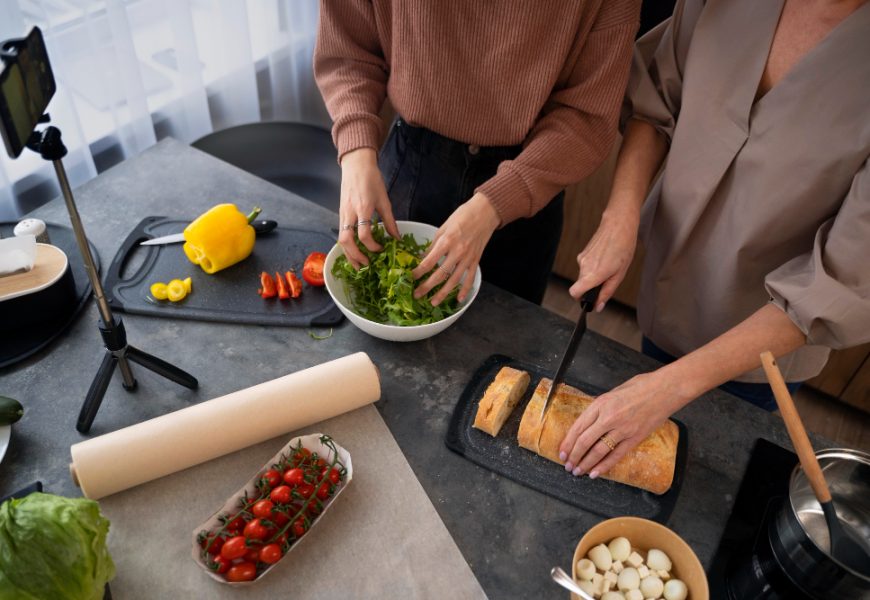From Fire to Algorithms
Cooking has always been more than just a process of preparing food—it is an expression of culture, community, and survival. From the first humans gathering around fire to families passing down handwritten recipes, food traditions have been deeply tied to memory and identity. For centuries, culinary practices relied on oral instruction, manual labor, and sensory learning: the smell of bread when it’s just right, the texture of vegetables in the market, or the touch of a grandmother’s hand guiding a child’s first attempt at kneading dough.
Yet in the 21st century, this timeless realm is merging with digital innovation. Smart ovens now adjust temperatures with algorithmic precision; AI-powered apps recommend recipes based on individual nutritional needs or even available fridge ingredients; and precision tools such as sous-vide machines allow home cooks to achieve results once reserved for Michelin-starred chefs. What once required instinct and experience is now increasingly supplemented—or even replaced—by data-driven devices.
This transformation raises important questions: What happens to tradition when cooking is guided by software rather than passed-down knowledge? Can an algorithm capture the essence of flavors shaped by centuries of cultural evolution? While some fear the erosion of heritage, the emerging reality is more complex. Technology does not erase culinary traditions; instead, it reinterprets them, weaving them into new contexts that reflect contemporary lifestyles.
Virtual platforms even extend the kitchen across borders. Families separated by distance can cook together online, sharing screens instead of countertops. Experimental labs are simulating taste digitally, hinting at a future where we might “sample” flavors without lifting a fork. These possibilities both fascinate and unsettle. Still, beneath the surface of automation lies something unchanged: the human need for nourishment, togetherness, and imagination. Technology may alter the tools, but the desire to connect through food remains at the heart of our culinary journey.
Beyond Recipes and Techniques
The integration of technology into the kitchen is not only changing how we cook but also expanding our very understanding of what cooking can be. Traditional acts—chopping herbs, stirring sauces, kneading dough—are now joined by tools that were unimaginable a generation ago. Augmented reality (AR) can project step-by-step instructions directly onto a countertop. Machine-learning systems analyze massive databases of ingredients to suggest flavor combinations that no cookbook has ever listed. Online communities enable millions of cooks worldwide to exchange techniques instantly, building digital archives of cultural cuisine that might otherwise fade away.
In some kitchens, 3D-printed foods reshape the concept of dining altogether. Purees and ingredients are layered with striking precision to create edible sculptures or personalized nutrition packs tailored for individual dietary needs. For those curious about sustainability, lab-grown proteins and plant-based alternatives offer a technological pathway toward reducing environmental impact. What used to be the domain of chefs and scientists is gradually becoming accessible to everyday households.
But as these innovations multiply, deeper philosophical questions come to the surface: What does it mean to “taste” when experiences can be simulated digitally? How can ancestral knowledge, often bound to storytelling and intuition, survive in an age where digital recipes dominate? Can a shared meal retain its meaning when family members dine together virtually rather than around the same table?
Rather than being purely a matter of efficiency or novelty, the fusion of tech and tradition is reshaping cultural identity itself. Cooking is increasingly understood as an interplay between continuity and change, between the preservation of heritage and the embrace of innovation. The modern kitchen, whether in a bustling city or a rural home, is no longer only a place for food preparation—it has become a site of negotiation between past and future.
Preserving Essence While Embracing Change
What emerges from this convergence is not a simple narrative of loss or gain. Technology can dilute traditions if applied without care, but it can also safeguard them. Digital archives of recipes can preserve endangered cuisines, while platforms connecting diaspora communities can revitalize cultural food practices across continents. Precision tools may strip away some of the guesswork, but they can also empower novice cooks to succeed, encouraging a new generation to participate in the joy of cooking.
Ultimately, technology does not dictate the future of food—it is people who decide how much to preserve, adapt, and transform. The kitchen continues to be a place where creativity intersects with necessity, and where culture is lived and transmitted. Whether guided by instinct, by recipes scribbled in family notebooks, or by AI recommendations on a smartphone, the act of cooking remains an expression of care, human ingenuity, and belonging.
Conclusion
Culinary traditions, once rooted in fire and carried through generations, now find themselves intertwined with algorithms, sensors, and networks. Yet even as the kitchen becomes increasingly digitized, the essence of cooking persists: the need to nourish, to connect, and to celebrate life. Technology is not replacing tradition—it is reframing it, offering new tools and perspectives while challenging us to think critically about what we value in food and culture.
As we navigate this rapidly shifting landscape, the responsibility lies with cooks, chefs, and eaters everywhere to approach the intersection of heritage and progress with awareness and curiosity. Food has always told the story of who we are. In today’s world, that story is being written with both ancient ingredients and modern devices—revealing a cuisine that is not only about sustenance, but also about imagination, identity, and the endless possibilities of human creativity.









